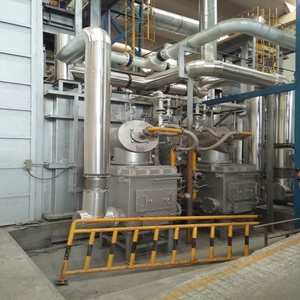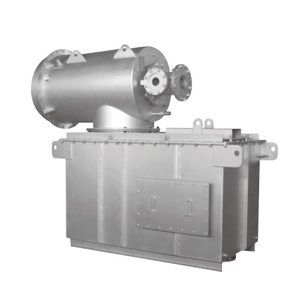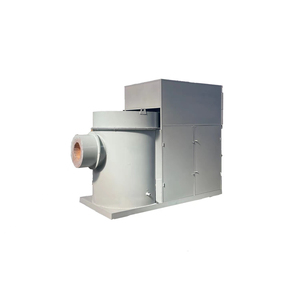
All categories
Featured selections
Trade Assurance
Buyer Central
Help Center
Get the app
Become a supplier

(1092 products available)


























A regenerative burner is a device that heats the combustion air by absorbing heat from the flue gases. It is also a type of energy-saving equipment for heating furnaces. Various regenerative burners are used in industrial heating systems to help businesses reduce energy consumption and environmental impact. The following table provides an overview of some typical types of regenerative burners.
The performance of a regenerative burner is closely related to the specifications and maintenance requirements. Here are some of the crucial specifications of the regenerative burner.
Proper maintenance is important for ensuring the performance and service life of the regenerative burners. Here are some key maintenance requirements:
By following the above maintenance tips, the regenerative burner can provide stable and efficient performance.
Regenerative burners are used in several industries and applications. Some of the most popular include:
Metal heat treatment and annealing processes require precise temperature control and uniform heating to achieve the desired material properties. Regenerative burners provide efficient and high-temperature heat sources, making them ideal for use in heat treating furnaces, annealing furnaces, and other heat treatment equipment. They facilitate processes like hardening, tempering, solution annealing, and stress relieving, among others.
Regenerative burners' ability to maintain stable high temperatures makes them very suitable for glass and ceramic production. The burners are used in glass melting furnaces, glass annealing lehrs, and ceramic kilns. They help to create the high temperatures necessary for melting raw materials and forming glass and ceramic products. Additionally, they enable precise temperature control to achieve the desired product characteristics.
Regenerative burners are also used in waste incinerators and thermal oxidizers. They help to achieve complete combustion of waste materials or pollutants, ensuring efficient and clean destruction. The burners also play key roles in maintaining high temperatures and reducing emissions in environmental remediation applications.
Regenerative burners are used in industrial ovens, dryers, and roasters for materials such as food, paper, textiles, and wood. They help to provide efficient and uniform heating, which is suitable for drying, baking, roasting, and other thermal processing operations. They also increase energy efficiency and production capacity.
Regenerative burners are used in non-ferrous metals melting, such as aluminum, copper, and zinc. They help to provide efficient and high-temperature heat sources for melting operations, thus improving energy efficiency and reducing operating costs.
Regenerative burners are used in chemical processing equipment like reactors and distillation columns. They help to provide precise and controlled heat sources for exothermic reactions, distillation, and other chemical processes. Additionally, they offer high efficiency and emission control features to meet the stringent requirements of chemical production.
When selecting the ideal regenerative burner, it is important to consider the following factors:
This is one of the most important factors to consider when choosing a regenerative burner for a specific application. Some regenerative burners are designed to work with natural gas, while others are compatible with various liquid fuels. Select a regenerative burner that is compatible with the preferred fuel type to ensure seamless integration and optimal performance.
Regenerative burners come in different sizes and specifications, each with a specific heating capacity. It is important to select a regenerative burner with a suitable heating capacity for the intended application to ensure efficient energy utilization and adequate heat generation.
It is important to choose a regenerative burner with an advanced control system that offers precise temperature control, programmable settings, and remote monitoring and adjustment capabilities. A sophisticated control system can improve operational efficiency, optimize energy usage, and enable easy integration with existing systems.
Consider the installation requirements of the regenerative burner, including space constraints, ventilation needs, and compatibility with existing infrastructure. Ensure that the selected regenerative burner can be safely and easily installed in the desired location with proper support and maintenance access.
When selecting a regenerative burner, it is important to consider its energy efficiency performance. Choose a regenerative burner with a high efficiency rating and advanced heat recovery technology to minimize fuel consumption, reduce greenhouse gas emissions, and lower operating costs.
It is important to choose a regenerative burner from a reputable manufacturer with a track record of quality products and reliable customer support. Select a supplier that offers comprehensive maintenance and service support to ensure the regenerative burner operates optimally and can promptly address any technical issues or system maintenance requirements.
Q1: How does a regenerative burner work?
A1: Regenerative burners use preheated combustion air. They have heat exchangers that transfer heat from exhaust gases to incoming combustion air. They store some heat from the last combustion cycle. The stored heat preheats the incoming air.
Q2: What are the advantages of regenerative burners?
A2: Regenerative burners have high energy efficiency. They can achieve heat recovery rates above 70%. The high efficiency helps to reduce fuel consumption and operating costs. Regenerative burners also produce low nitrogen oxide emissions. They are suitable for use in environmentally sensitive areas.
Q3: How do regenerative burners reduce NOx emissions?
A3: Regenerative burners operate at high combustion efficiency. In a well-controlled combustion process, the fuel burns completely. The high temperature and longer residence time allow for complete fuel oxidation. As a result, there is minimal formation of nitrogen oxides (NOx). When NOx is formed, the burner design and operation minimize its release into the atmosphere.
Q4: What is the lifespan of a regenerative burner?
A4: The lifespan of a regenerative burner depends on its design, quality of construction, and maintenance. A well-maintained regenerative burner can last for fifteen to twenty years before it requires replacement.